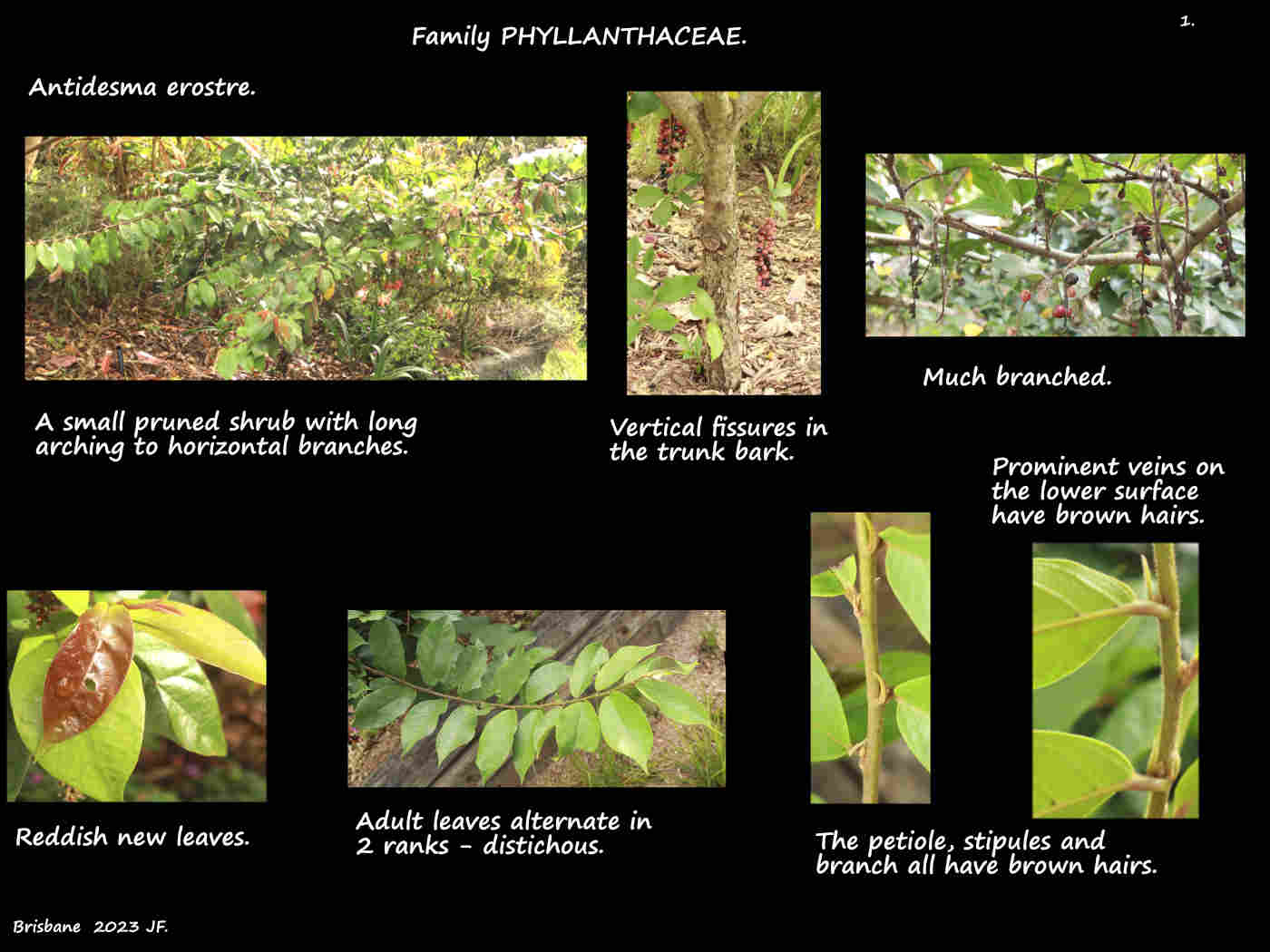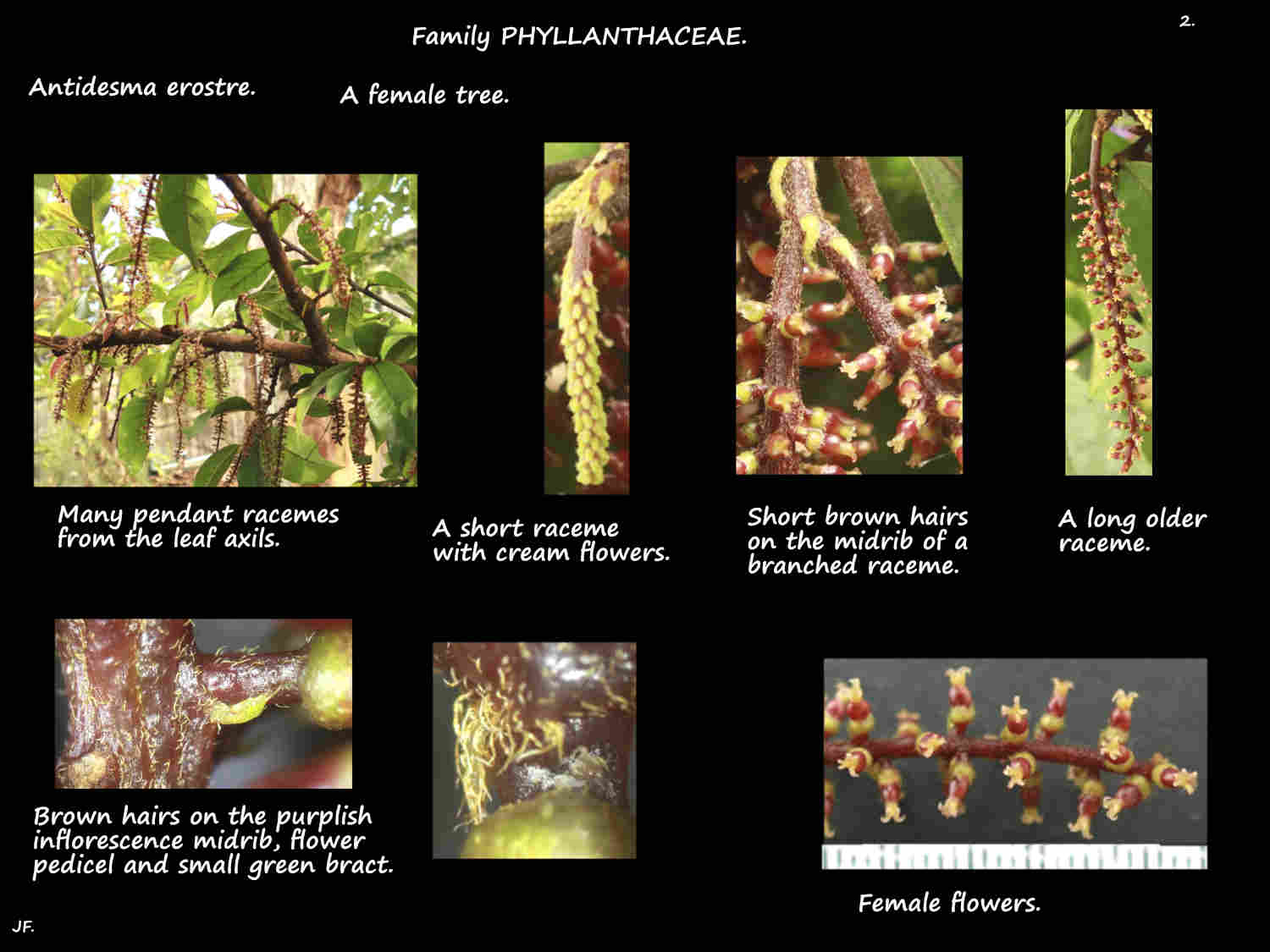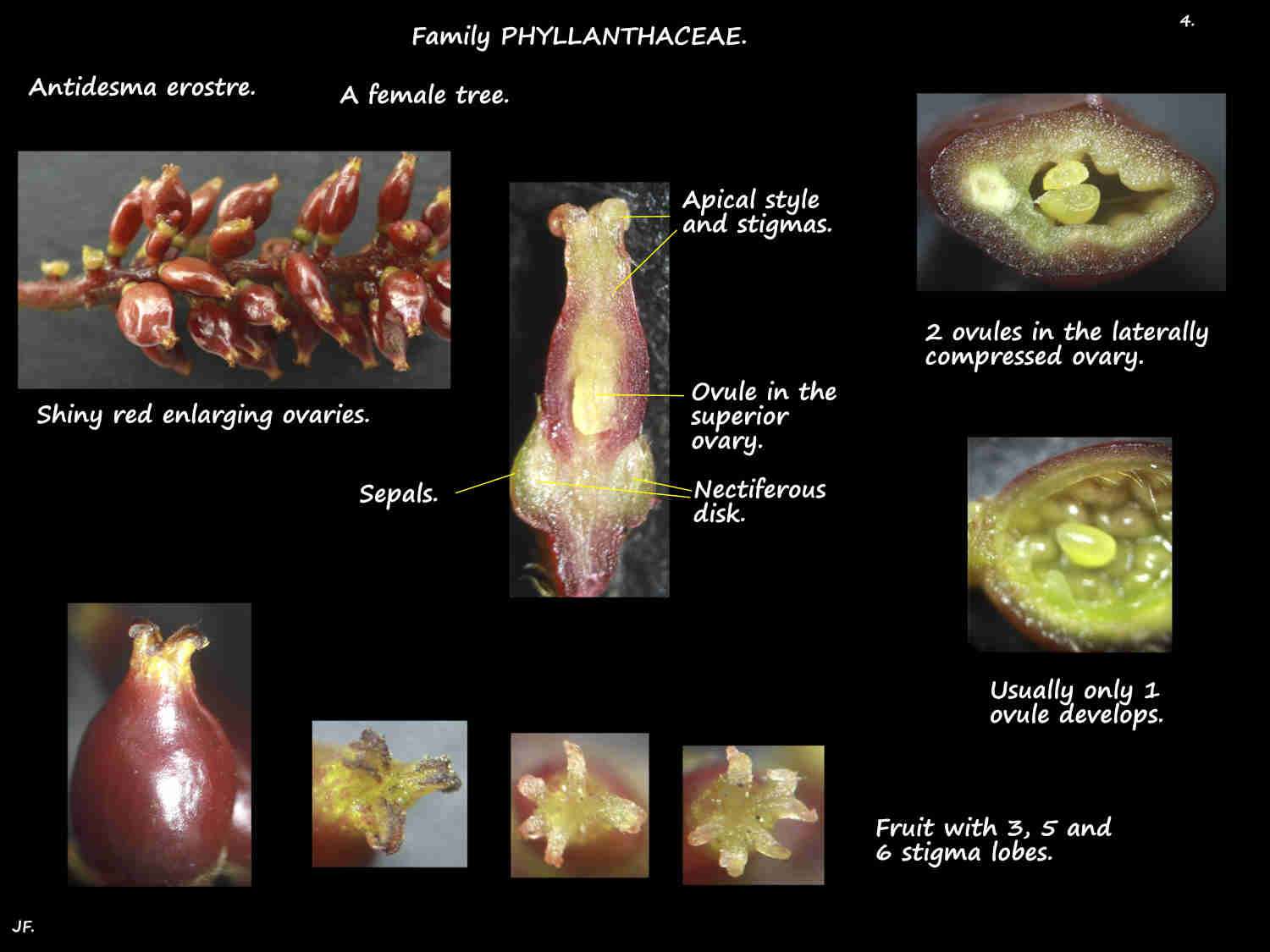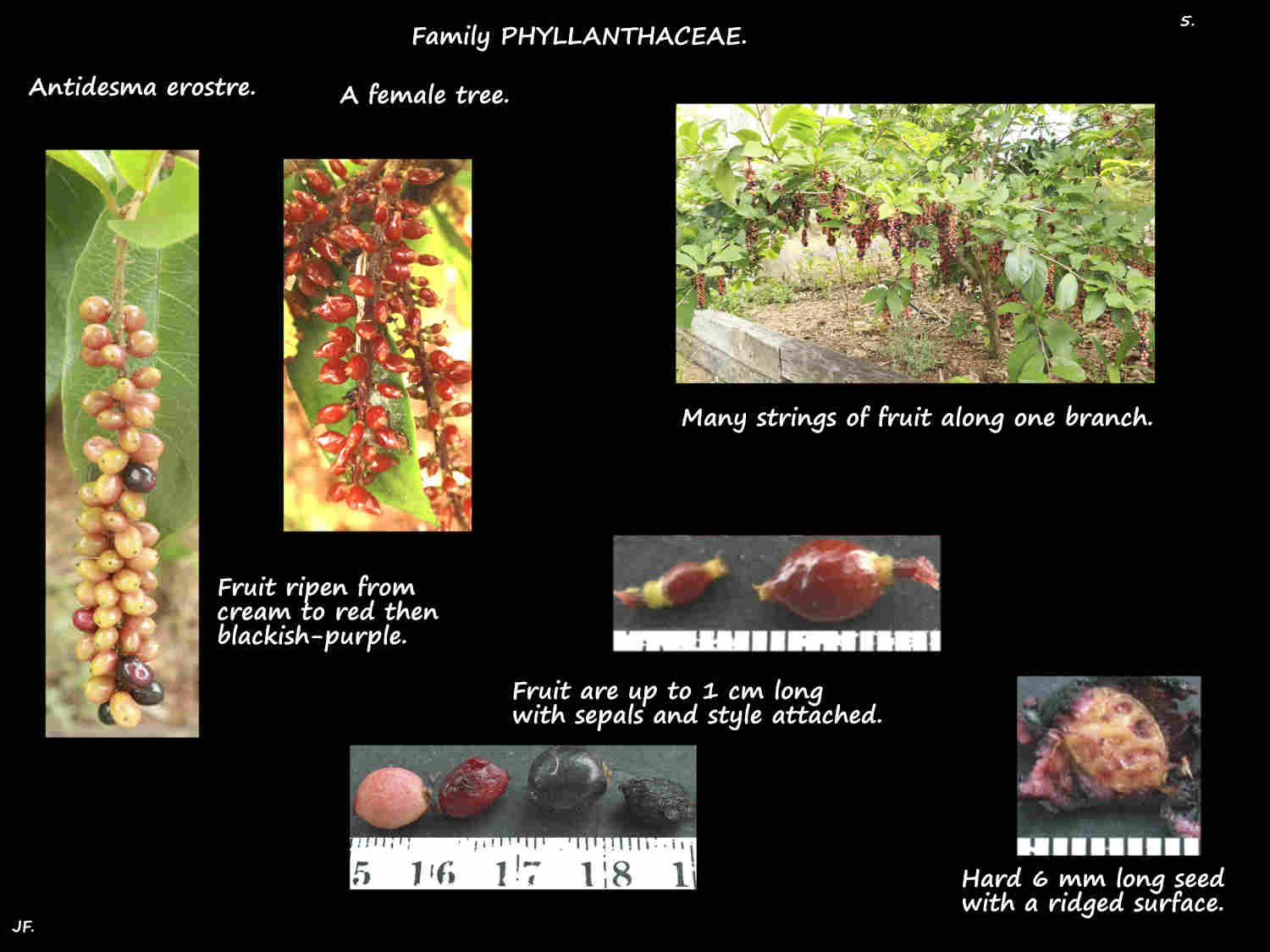Antidesma erostre.
Native or Wild Currant is native to coastal rain forests along the North Queensland coast and New Guinea.
Bush plants are shrubs or trees up to 5 (6) m high and 4 m wide.
Bushy cultivated shrubs are around 3 m high and nearly as wide.
They are much branched and have a rounded crown.
The grey-brown trunk bark develops longitudinal fissures.
Small new branches have fairly dense simple brown hairs which gradually disappear.
The leaves are alternately arranged in 2 ranks (distichous).
They are on petioles up to 1 cm long with a grooved upper surface.
Linear stipules at the base of the petioles, around 4 mm long gradually fall off.
New leaves are reddish then yellow-green and have hairs on the lower surface.
There are also short brown hairs on young petioles and stipules.
Adult leaves, up to around 10 cm long and 3 or 4 cm wide are dark green above and paler underneath.
The wide elliptic blades have a tapering tip with a mucro (small abrupt point) at the end.
The base is rounded and the smooth edge curves up slightly making the blade a shallow ‘V’ shape in cross section.
A few hairs may remain on the mid and large veins on the lower surface.
There may small hair-covered depressions (domatia) in the axils along the midrib on the lower surface.
The up to 8 pairs of pinnate veins are raised on the lower surface.
The inflorescences are long racemes in the leaf axils towards the branch end.
The pendant inflorescences are around 12 cm long with flowers on a pedicel 1 to 2 mm long.
There are short brown hairs on the raceme midrib and the pedicels.
The cream male and female flowers are on different plants but A. erostre is one of the few species that can produce
viable seeds without a male plant.
The 1 mm wide female flowers and 2 mm males have sepals but no petals.
The sepals, fused for most of their length have shallow rounded lobes.
There are long pale brown hairs on the outer surface and a few on the base of the inner surface of the lobes.
Both sexes have a nectiferous disk that may have a few scattered hairs.
Male flowers have fertile stamens and no, or a rudimentary ovary.
Female flowers have a superior ovary with 2 ovules in the single locule but usually only one ovule develops.
The style is apical and has a variable number of stigma lobes.
The densely packed fleshy fruit in the raceme are up to 1 cm long.
The laterally flattened ovoid or ellipsoidal fruit mature from cream to red then dark purple and almost black.
The calyx, style and stigmas remain.
The hard pale brown seed is around 5 mm with a ridged surface.
J.F.







